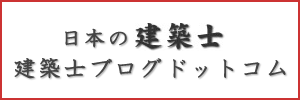No. 36: 適正規模を求めて (December 14, 2009)
世紀の合併の騒がれたタイムワーナーとAOLの合併が、正式に解消になったという記事が12月11日付けの日本経済新聞に載っている。合併時は天文学的な数字であった時価総額も50分の1に縮小した。グローバル市場で、主導的な地位をねらう企業は、明らかに大企業である必要がある。しかし、会社規模が大きくなればなるほど、その中味の大部分は外部環境からますます遠ざかる。そして、内部組織が複雑化してくる。そして、複雑さにはおのずから一定限度があり、一定限度を超える複雑さは、どのように設計された構造をもってしても、これを支えることは難しくなる。つまり、規模は複雑さを決定し、複雑さが規模を決定する。問題は、適正規模を知る確実な方法がないことである。適正規模を求めて、終わりのない議論をする。答えがないのだから、これほど時間つぶしに相応しい議題はない。削減しては、訂正の繰り返し。答えのない問題を議論すると、興味は尽きないが、時間がつきる。(Written by Shigeo Sunahara of CBC, Inc.)
No. 36: In search of the optimal size (December 14, 2009)
Nihon Keizai Shimbun reported in its Dec. 11 issue that the merger between Time-Warner and AOL dubbed as the merger of the century was officially dissolved. The astronomical aggregate market price at the time of merger went down to one fiftieth. It is clear that a company has to be big if it wishes to take an active part in the global market. However, as a company grows bigger in size, most part of its nerve center is far from the outside environment, and the internal organization grows more complicated. The complexity has a limit itself. It is very hard for a structure to support the complexity however well organized it is once it exceeds a certain level. That is, company size specifies the complexity, and complexity specifies the company size. The problem is that no absolute approach exists to know the optimal size. People have endless discussions in search of the optimal size. No discussion is suitable for killing time than discussion on the optimal size. Eliminate what seems excessive, and make a correction because what seems excessive is not really excessive. And this process goes on. It is rather interesting to discuss a problem that will never be solved, but time is running out.
No. 36: In search of the optimal size (December 14, 2009)
Nihon Keizai Shimbun reported in its Dec. 11 issue that the merger between Time-Warner and AOL dubbed as the merger of the century was officially dissolved. The astronomical aggregate market price at the time of merger went down to one fiftieth. It is clear that a company has to be big if it wishes to take an active part in the global market. However, as a company grows bigger in size, most part of its nerve center is far from the outside environment, and the internal organization grows more complicated. The complexity has a limit itself. It is very hard for a structure to support the complexity however well organized it is once it exceeds a certain level. That is, company size specifies the complexity, and complexity specifies the company size. The problem is that no absolute approach exists to know the optimal size. People have endless discussions in search of the optimal size. No discussion is suitable for killing time than discussion on the optimal size. Eliminate what seems excessive, and make a correction because what seems excessive is not really excessive. And this process goes on. It is rather interesting to discuss a problem that will never be solved, but time is running out.



